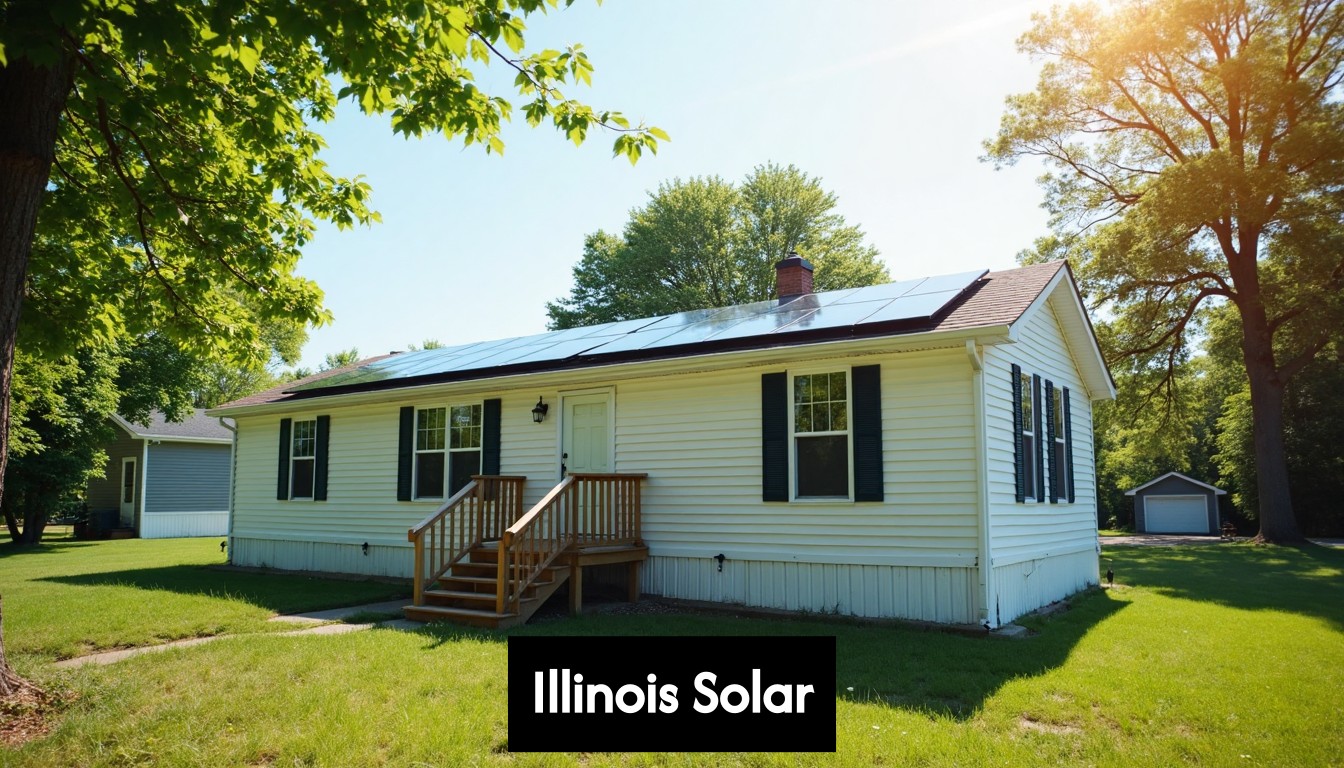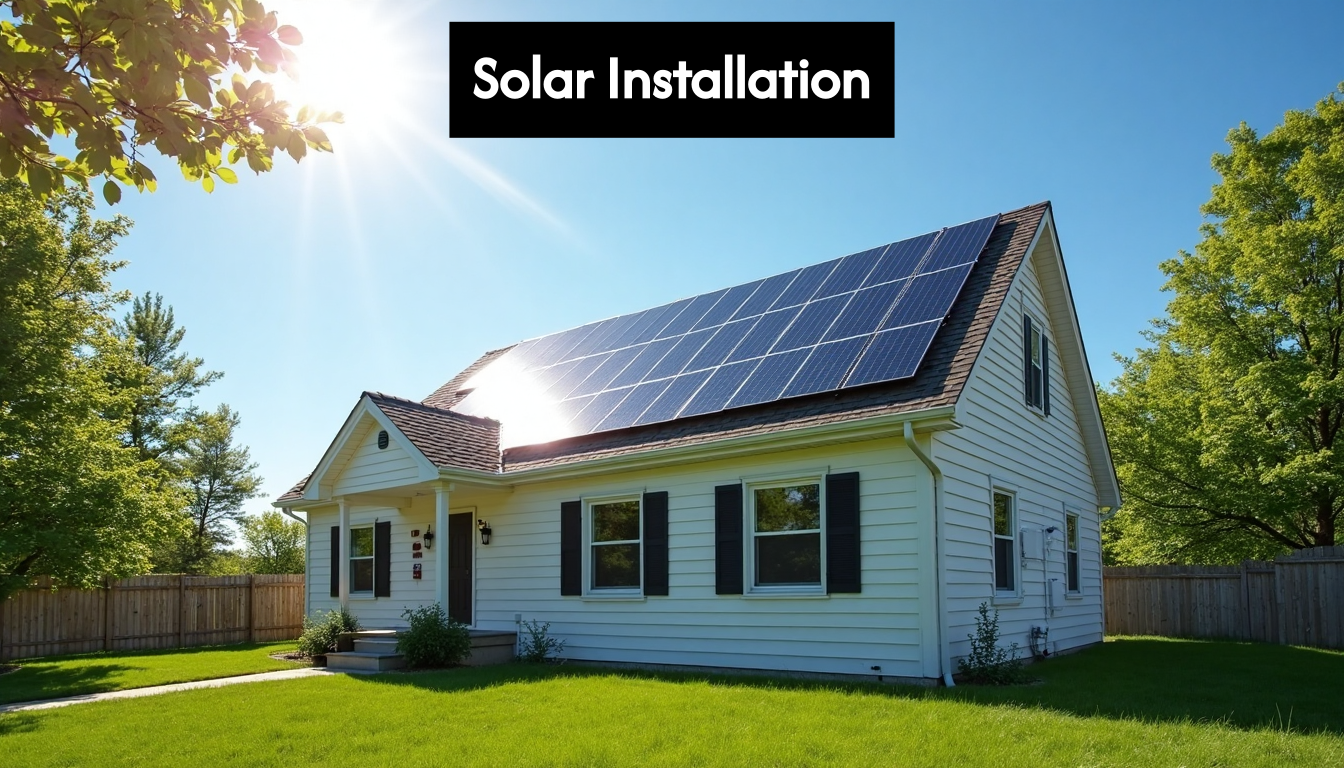Solar Panel Efficiency in 2025: Smart Choices for Illinois Homes & Businesses
Contact Us
We will get back to you as soon as possible.
Please try again later.
Solar Panel Efficiency in 2025: Smart Choices for Illinois Homes & Businesses
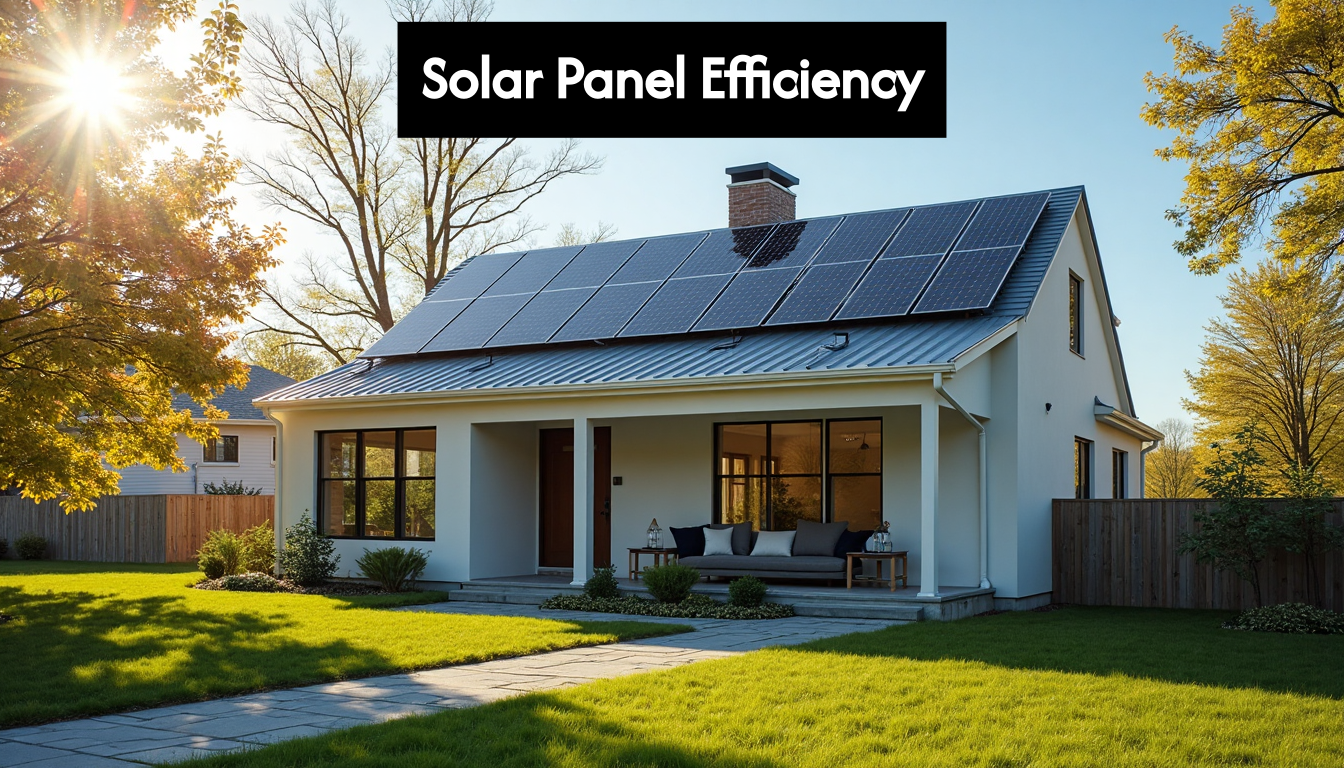
Solar panel efficiency is about to make a real difference for Illinois homes and businesses. Here’s something that may surprise you. High-efficiency panels now let property owners cut their power bills by up to 94 percent and slash payback times to as little as four years after incentives. Most people focus on the panel brand or wattage. The real game is in understanding how modern designs, smart installation and state-level rebates work together to squeeze out every dollar of savings. The numbers behind these advancements reveal a side of solar most folks never see.
Table of Contents
Quick Summary
| Takeaway | Explanation |
|---|---|
| Understand Efficiency Determinants | Solar panel efficiency is influenced by cell design, material quality, environmental factors, and technological advancements, crucial for making informed solar investments in Illinois. |
| Maximize Installation Techniques | Strategic panel installation, including optimizing roof space and minimizing shading, can significantly enhance energy generation and reduce electricity bills by up to 94%. |
| Leverage Financial Incentives | Illinois residents can take advantage of federal and state tax credits, utility-specific rebates, and performance-based incentives, potentially leading to faster payback periods and long-term financial gains. |
| Evaluate Customized Solutions | Different properties have unique energy needs, requiring tailored solar solutions, from small systems for compact homes to large-scale installations for businesses, ensuring optimal performance and cost-effectiveness. |
| Continuous Performance Monitoring | Regular maintenance, monitoring systems, and staying informed about emerging technologies are essential for maximizing solar panel efficiency and adapting to advancements. |
What Determines Solar Panel Efficiency?
Solar panel efficiency Illinois represents the critical measure of how effectively solar panels convert sunlight into usable electrical energy. Understanding the core factors that influence this efficiency helps homeowners and businesses make smarter investment decisions in renewable energy technologies.
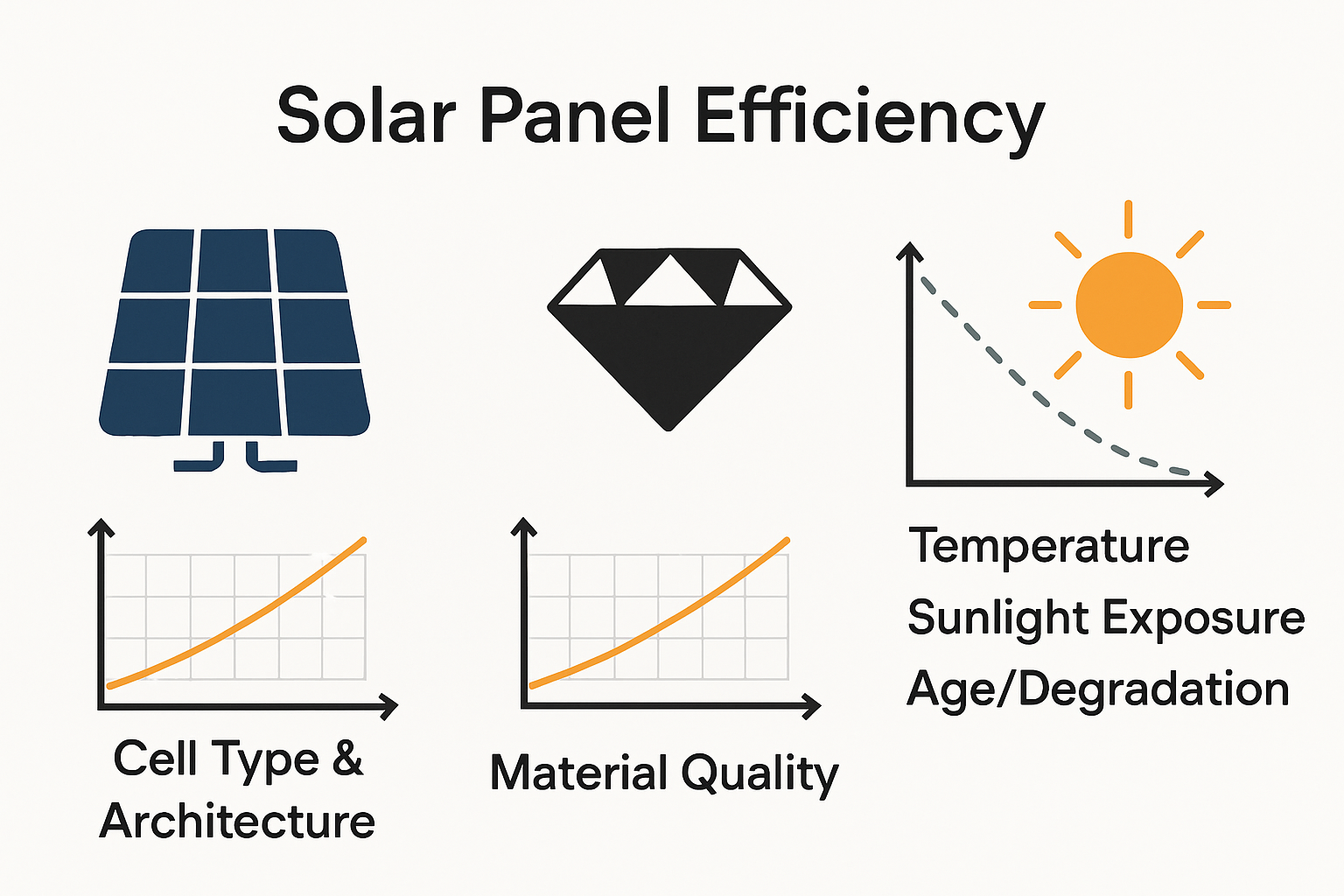
The Science Behind Solar Cell Performance
At the heart of solar panel efficiency lies the photovoltaic (PV) cell design. Modern solar technologies have dramatically improved cell performance through advanced materials and engineering. Research from Clean Energy Reviews reveals that current high-performance solar panels utilize N-type cell technologies like heterojunction (HJT), TOPcon, and back-contact (IBC) designs, which can achieve remarkable efficiency rates exceeding 24%.
The fundamental components determining solar cell efficiency include:
-
Silicon Type : Monocrystalline silicon cells typically offer higher efficiency compared to polycrystalline alternatives. These advanced cells can convert more sunlight into electricity with greater precision.
-
Cell Architecture : The internal structure of solar cells significantly impacts their ability to capture and transform solar energy. Innovations in cell design have progressively reduced energy loss mechanisms.
-
Material Quality : Higher-grade silicon and sophisticated manufacturing processes contribute to improved electron movement and reduced electrical resistance.
Environmental and Structural Factors
Solar panel efficiency extends beyond cellular design, encompassing broader environmental and structural considerations. Panel size plays a crucial role in overall energy generation. Clean Energy Reviews highlights that increasing panel surface area can substantially improve energy capture, with modern residential solar panels now reaching power ratings over 700W.
Critical external factors influencing solar panel performance include:
-
Temperature : Solar panels become less efficient as temperatures rise. High heat can reduce electrical output, making panel placement and cooling strategies essential.
-
Sunlight Intensity : Direct, unobstructed sunlight maximizes panel efficiency. Factors like shading, panel orientation, and geographic location dramatically impact energy generation.
-
Panel Degradation : Solar panels naturally lose efficiency over time. Most quality panels maintain approximately 90% of their initial performance after 10 years and around 80% after 25 years.
Technological Advancements and Future Potential
The solar industry continues pushing efficiency boundaries through continuous research and development. Emerging technologies like multi-junction cells and perovskite solar cells promise even higher conversion rates. These innovations could potentially increase solar panel efficiency beyond current limitations, making renewable energy more accessible and economically attractive.
For Illinois homeowners and businesses, understanding these efficiency determinants enables more informed decisions about solar investments. By considering cellular design, environmental factors, and technological trends, individuals can select solar solutions that maximize energy production and long-term financial benefits.
How to Boost Efficiency for Your Property
Maximizing Illinois solar panel efficiency requires strategic planning and smart investments. Property owners in Illinois have multiple approaches to enhance their solar energy systems, ensuring optimal performance and substantial long-term financial benefits.
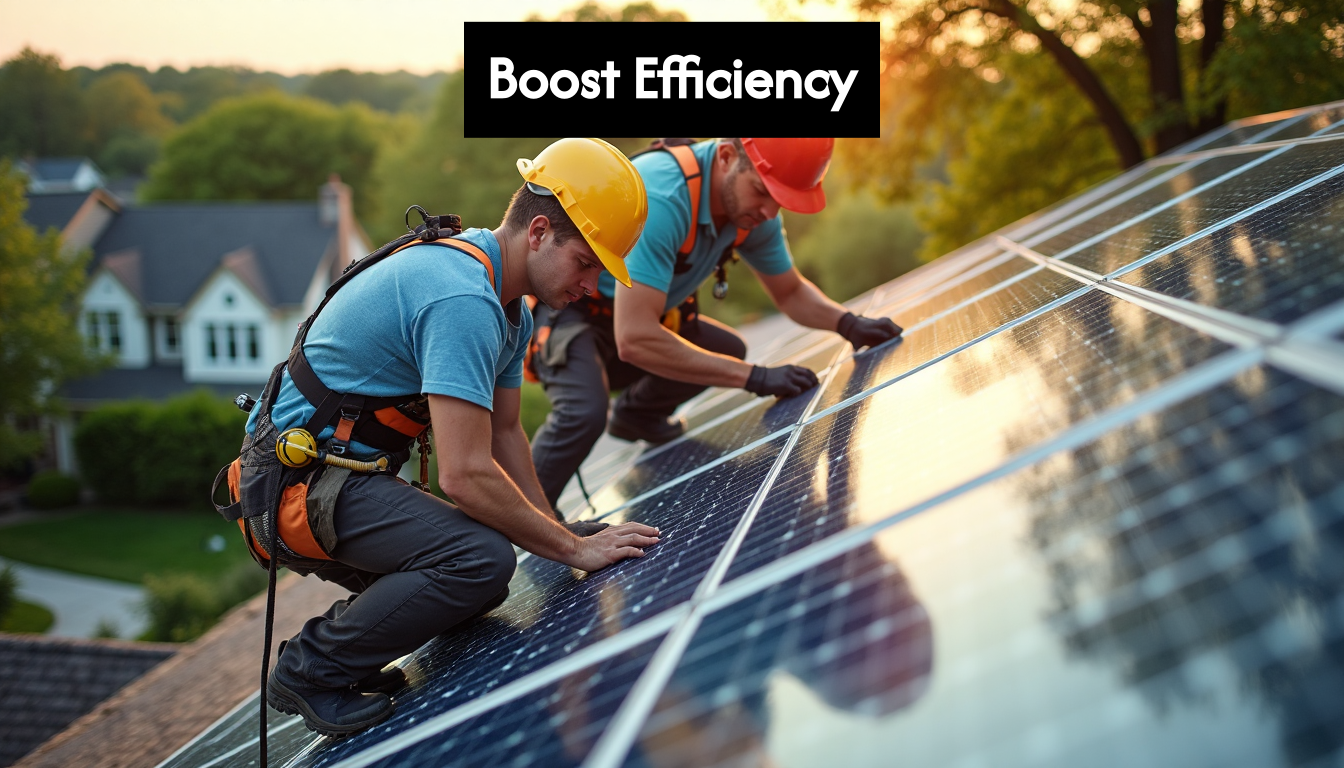
Strategic Solar Panel Installation
The foundation of boosting solar efficiency starts with intelligent installation techniques. EnergySage indicates that high-efficiency solar panels can help Illinois property owners offset up to 94% of their typical electric bills, with average payback periods as short as four years after incentives.
Key installation strategies include:
-
Roof Space Optimization : Carefully map and utilize maximum available roof area. Panels with at least 450 watts capacity in full sunlight provide superior energy generation.
-
Precise Panel Orientation : Position panels to maximize direct sunlight exposure. In Illinois, south-facing installations typically generate the most consistent energy output.
-
Minimal Shading Interference : Remove or trim potential obstructions like tree branches that could reduce panel performance.
Advanced Energy Management Systems
Sophisticated energy management goes beyond basic panel installation. Public Interest Research Group highlights innovative strategies for maximizing solar investment returns.
Effective energy management approaches include:
-
Battery Storage Integration : Installing battery systems allows storing excess energy for use during low sunlight periods. Federal tax credits and Illinois utility rebates can offset storage installation costs, with some utilities offering up to $300 per kilowatt-hour of installed storage.
-
Smart Electricity Rate Planning : Participating in time-varying electricity rate programs like ComEd’s Residential Real Time Pricing enables strategic energy consumption. By shifting energy use to cheaper periods, property owners can significantly reduce overall electricity expenses.
-
Monitoring Technologies : Implement real-time solar production tracking systems to understand and optimize energy generation patterns.
Continuous Performance Optimization
Solar efficiency is an ongoing process requiring regular maintenance and technological adaptation. Property owners should:
- Conduct annual professional solar panel inspections
- Clean panels regularly to remove dust and debris
- Stay informed about emerging solar technologies
- Consider periodic system upgrades as more efficient technologies become available
For Illinois homeowners and businesses, boosting solar panel efficiency is not just about initial installation but creating a comprehensive, adaptable energy strategy. By combining smart installation, advanced management systems, and continuous optimization, property owners can transform their solar investments into powerful, cost-effective energy solutions that provide substantial long-term benefits.
Financial Benefits and Illinois Incentives in 2025
Solar energy investments in Illinois have become increasingly attractive, with an unprecedented array of financial incentives making renewable energy more accessible and economically compelling for homeowners and businesses in 2025.
Federal and State Tax Credit Landscape
NerdWallet reports that the average home solar system in Illinois costs $35,142 before federal tax incentives and drops to $24,599 after federal credits. The federal solar investment tax credit continues to play a crucial role in making solar installations financially viable.
Key tax incentive highlights include:
-
Federal Solar Tax Credit : Covers 30% of total installation costs, providing substantial upfront savings for solar adopters.
-
Illinois Shines Adjustable Block Program : Offers rebates ranging from $7,500 to $9,000 for residential solar installations.
-
Illinois Solar For All Program : Provides income-eligible residents with incentives between $12,500 and $15,500, dramatically reducing solar investment barriers.
Utility-Specific Incentives and Rebates
Solar Reviews reveals comprehensive utility incentives that significantly enhance the financial attractiveness of solar investments in Illinois. Utility customers with Ameren and ComEd can access multiple financial benefits:
-
Distributed Generation Rebates :
- $2,100 for solar panel installations
- $4,050 for battery storage systems
-
Additional Technology Incentives :
- $300 per kilowatt DC for smart solar inverters
- $300 per kilowatt-hour for energy storage solutions
Long-Term Financial Strategies
Beyond immediate incentives, solar investments offer multiple financial advantages:
- Reduced monthly electricity bills
- Protection against rising energy costs
- Potential increase in property value
- Performance-based incentives through net metering
- Potential sell-back of excess energy to the grid
These financial mechanisms transform solar from an environmental choice to a smart economic strategy. Illinois residents can expect faster payback periods compared to many other states, with some systems recovering initial investments in as little as 7-10 years.
For Illinois homeowners and businesses, 2025 represents a pivotal moment in solar investment. The convergence of federal tax credits, state programs, and utility incentives creates an unprecedented opportunity to transition to renewable energy while simultaneously generating significant financial returns. Strategic planning and understanding these complex incentive structures can turn solar installations into powerful long-term financial assets.
Comparing Solar Solutions for Unique Needs
Solar energy solutions in Illinois are not one-size-fits-all. Illinois property owners have diverse energy requirements, roof configurations, and financial considerations that demand customized solar approaches tailored to individual needs and constraints.
System Size and Energy Requirements
Power Outage US provides insights into the scalability of solar installations. Solar systems in Illinois range from compact 2 kW configurations to expansive 6 kW setups, allowing flexibility for different property types:
-
Small Property Solutions : A 2 kW system costs approximately $5,250 after tax credits and requires 143 square feet of roof space. Ideal for compact homes or limited energy needs.
-
Medium-Sized Installations : A 6 kW system priced around $15,750 covers 429 square feet, suitable for average residential properties with moderate energy consumption.
-
Comprehensive Energy Coverage : EnergySage recommends an 11.94 kW system to fully offset typical Illinois electric bills, costing about $24,285 after federal tax credits.
Performance Considerations
Illinois Renewable Energy highlights the importance of understanding panel efficiency and performance characteristics. Modern solar technologies offer conversion rates exceeding 20%, with premium models reaching up to 23% efficiency.
Key performance factors include:
-
Conversion Efficiency : Higher percentages translate to more electricity generated from available sunlight.
-
Roof Orientation : South-facing installations typically maximize energy production in Illinois.
-
Shading and Obstruction Analysis : Professional assessments help determine optimal panel placement.
Specialized Solar Solutions
Beyond standard residential solar installations, Illinois offers specialized solar solutions for unique scenarios:
-
Mobile Home Configurations : Lightweight, flexible panel systems designed for limited roof structures.
-
Rural Property Options : Off-grid systems with robust battery storage for areas with inconsistent utility infrastructure.
-
Commercial Installations : Large-scale systems designed for businesses with significant energy demands.
Choosing the right solar solution requires careful evaluation of energy needs, financial capacity, and property characteristics. By understanding the nuanced landscape of solar technologies, Illinois property owners can make informed decisions that balance performance, cost-effectiveness, and long-term sustainability.
The solar market in 2025 offers unprecedented customization. Whether you’re a homeowner with limited roof space or a business seeking comprehensive energy independence, there’s a solar solution designed to meet your specific requirements. Consulting with local solar professionals can help you navigate these options and design a system that perfectly matches your unique energy profile.
Frequently Asked Questions
What factors affect solar panel efficiency?
Solar panel efficiency is influenced by the type of silicon used, the architecture of the solar cells, material quality, environmental conditions such as temperature and sunlight intensity, and advancements in technology.
How can I maximize the efficiency of solar panels for my home in Illinois?
To maximize solar panel efficiency, consider strategic installation that optimizes roof space, minimizes shading, and uses battery storage systems for energy management. Regular maintenance and monitoring can also improve performance.
What financial incentives are available for solar panel installation in Illinois in 2025?
In 2025, Illinois residents can benefit from federal solar tax credits covering 30% of installation costs, state incentives through the Illinois Shines program, and utility-specific rebates for solar and battery storage systems.
How do I choose the right size solar system for my home or business?
Choosing the right solar system size depends on your property’s energy needs. A small home may require a 2 kW system, while larger properties might need an 11.94 kW system to fully offset electric bills. Consulting with a local solar professional can provide tailored recommendations.
Bring Next-Level Solar Efficiency Home with Ellingson Solar
Are you worried your current energy bills keep climbing despite all the advancements in solar panel efficiency? If you are in Illinois, you probably want more than just a basic installation. The article showed how strategic system design, optimized panel placement, and advanced solutions like solar battery storage can completely transform savings on your electric bill—up to 94% in many cases. What most people don’t realize is that truly maximizing these new efficiency breakthroughs and Illinois-specific rebates takes a partner who knows the landscape inside and out.
Ellingson Solar specializes in helping Illinois homes and businesses tap into every available solar benefit. We design custom systems using only the latest technology and guide you through available federal and state incentives so you see the payback and long-term results you read about here.
Ready to turn potential savings into real results? Take the first step with a personalized solar consultation from our award-winning team. Every day that passes is a day of rising energy costs and missed savings. Visit Ellingson Solar now and discover how you can unlock maximum efficiency for your property—secure your energy independence this year.
Contact Ellingson Solar today! Upgrade your home with solar and start saving today! Inquire for free quotes & financing options.
Contact Us
We will get back to you as soon as possible.
Please try again later.
